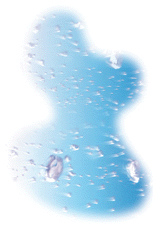Parents are urged to be wary of Venetian blinds that can present a lead poisoning hazard to young children.
The Consumer Council has identified, in a recent test, 3 out of 6 aluminium based Venetian blind samples to contain excessive levels of lead in the paints.
For health precaution, parents with children aged 6 and younger should remove these Venetian blinds from their homes and replace them with new blinds without toxic heavy metals in their paints or with alternative window coverings.
According to the test report, published in the May (247) issue of the Council's monthly magazine 'CHOICE', the hazard arose when over time the paint on the blind deteriorates from exposure to sunlight and heat to form lead paint chips and dust on the surface of the blind.
Young children can ingest lead by wiping their hands on the blinds and then putting their fingers in their mouths. The toxic heavy metal can also find its way into the human body through air polluted with lead.
Lead poisoning can present a serious health problem particularly to young children and this may have long-term implications to the community as a whole.
According to the World Health Organization, continual exposure of young children to low levels of lead causes damage to the developing brain which appears as loss of IQ and behavioural problems.
On the basis of existing literature, it can be assumed that the average IQ score of a population loses an average of 2 to 3 points when the average blood lead level of the population increases by 10 micrograms per decilitre (mg/dl).
Besides lead, the test found also excessive levels of chromium, another toxic heavy metal harmful to health, in 4 of the samples. Highlights of the test results :
- The highest value of leachable lead found in the samples was 10,076 ppm (parts per million), which is more than 40 times higher than the safety limit (250 ppm) in accordance with the British Standard on children's products.
- In the case of leachable chromium, the highest value was found to be 1,989 ppm which is almost 20 times in excess of the safety limit (100 ppm) of the British Standard.
- All other leachable heavy metals, i.e. antimony, arsenic, barium, cadmium and mercury, were found to comply with the safety requirement.
In addition, the test also examined the durability of the colourful stickers adorning the Venetian blinds, and found curlings on some of the stickers.
The report warned that if young children accidentally put the torn off stickers into their mouth, choking hazard might result. Parents should therefore inspect these colourful stickers from time to time for signs of curling.
The Consumer Council has already notified the Customs and Excise Department's Trading Standards Investigation Bureau of the findings as the presence of hazardous lead and chromium in the paints of Venetian blinds may constitute an offence under the Consumer Goods Safety Ordinance.
The Department has served the distributor with a Prohibition Notice under the Ordinanceto prohibit them from further supplying the Venetian blinds in question.
In June last year, the U.S. Consumer Product Safety Commission (CPSC) also issued a safety warning on some of the old plastic blinds in use. In this case, lead was added to stabilise the plastic in the blinds.
While no such plastic blinds were found in Hong Kong, aluminium Venetian blinds are commonly in use at homes and offices.
Consumers in particular parents with young children are advised to consult the test report to avoid the use of aluminium Venetian blinds with heavy metals pigments in the paints.

Clean air that is free of particles and odour is a much sought after commodity these days. The quest for clean air has spawned a whole new array of electrical appliances - the household air cleaners.
But do these devices really provide the ultimate solution to the problem of indoor air pollution? Are they effective? Are they safe? Do they give value for money?
To assist consumers, the Consumer Council has tested 26 household air cleaners with prices ranging from just $400 to some $4,000. The samples covered all 3 types available on the market: ionizers (6), filters (6) and hybrid devices (14).
To evaluate their ability in removing dust and particles (respirable suspended particulates) in the air, the samples were subjected to a smoke removal test.
The test detected rather considerable variations in performance. The filter type seemed to fare better: 5 of the 6 models scored a smoke removal rate of over 1,500 l/min. (litres per minute) with the highest rate at more than 3,900 l/min.
For the hybrid models, the rate ranged from 112 to 3,600 l/min. For the ionizers, the rate was all below 500 l/min.
The air cleaners were also subjected to a toluene removal test to measure its ability to remove odour. Toluene is a common indoor air pollutant from cigarette smoking, cooking, wood furniture and some stationery.
The test revealed that 6 of the samples had absolutely no effect on removing toluene. Of these 6 models, 2 claimed to have carbon filters which are known to be capable of absorbing volatile organic compounds in the air.
Of the remainders, substantial variations were detected among the samples with the highest toluene removal rate at 284 l/min.
On the whole, the household air cleaners included in this test were capable of removing dust and particles to various effects depending on the type and model one chooses.
Their ability to remove odour, however, still left much to be desired. Some might even be totally ineffective.
But it should be noted that new contaminants constantly enter the house and, therefore, air cleaners can never completely remove airborne particulates. Replacing filters, periodic cleaning and maintenance are needed to upkeep the rate of removing contaminants in the air.
The report also sounded a safety warning on the emission of ozone by 5 of the test models - 3 hybrid and 2 ionizer types.
Ozone is a skin, eye and upper respiratory system irritant. It may cause headache, cough, irritation of eye and the upper respiratory tract when inhaled.
According to the test, the highest ozone generation rate was 2,757 micrograms per hour (m g/hr). If that particular model is used non-stop in a sealed room of 10 square meters the ozone concentration may exceed the U.S. guideline on indoor ozone concentration of 0.05 ppm, inducing adverse health effect to the users.
But the report observed that the possibility of such indoor ozone concentration level -in a sealed room for a prolonged period of time - is unlikely in real daily life as windows and doors are left open intermittently.
Unlike an uncompleted property development, a second-hand flat offers a prospective buyer the distinct advantage of being able to physically inspecting the flat before any decision to purchase.
In this May issue of 'CHOICE' is included a comprehensive report on practically everything that a second-hand flat buyer needs to know when inspecting the property.
The report advised consumers to make every effort to verify independently such vital information as the flat area, the property age and the possible existence of illegal structures, etc.
For the size of the flat, buyers will do well to actually measure the area. Also try to obtain the sales brochure from the property agent so that the measured area can be compared to the area stated in the brochure.
For the property age, buyers should find out the duration of the lease term, whether it can be renewed and the terms of renewal which may vary from case to case. Sometimes crown rent, calculated at 3 percent of the rateable value of the property, will be charged annually upon renewal of the lease. In other cases, the terms of renewal are subject to the determination of the SAR Government.
For illegal structures, check carefully for signs of any illegal structural alterations or extensions that may endanger the building as a whole. A floor plan can be obtained from either the property agent or the Land Registry for comparison of the original blueprint against the existing structure.
Other issues that a buyer should also pay heed include: internal facilities, common area, gas/water/electrical meters, fire protection installations, security, management and maintenance, and parking.

A host of home water treatment units have sprung up on the market competing each other with ever new and exotic health claims.
Invariably they all promise their users pure and clean drinking water. But, more than that, some even proclaim they could work miracles with the water they treat - such as offering cures for various maladies and enhancing health.
Consumers are advised that they should treat these health-related claims with caution. Such claims may not be well substantiated scientifically.
Some units also contain filters that need to be replaced regularly to maintain hygiene and efficiency. In some cases, it may be necessary to install another water filter in addition to the unit adding up cost in the process. Most water treatment units are priced at several thousands or much more.
Three types of water treatment units - water ioniser, water magnetiser or activator and water unit - were reported in this issue of 'CHOICE' for the information of consumers.
The report cited examples of claims made by these products.
For example, some claim to produce alkaline water rich in minerals such as calcium. But according to a test conducted by the Japan Consumer Information Center, the alkalinity and calcium levels did not rise to the values claimed by the manufacturers. Moreover, the calcium level is not high enough to satisfy daily needs. It is more practical to consume calcium-rich food than alkaline water to meet the daily requirement.
Some claims also suggest that drinking acidic water is harmful to health. But the truth is that it is not necessary to avoid acidic food or drinks since our body is self-regulated. Unless acidic chemical substances are accidentally taken or acidic food in large quantity is consumed will our digestive system be irritated.
Others claim that acidic water has antiseptic property beneficial for treating wounds and sore throat. But the report noted that if the acid is too weak, the antiseptic property may not be good enough. If the acid is too strong, the water can irritate the skin. Over using acidic water for mouth rinsing may also damage the teeth enamel.
Some water cleaners claim to increase the "activity" of the oxygen in water and kill bacteria. However, its mechanism of killing bacteria is not clear. Ozone is used in some countries to disinfect water but it is not known whether water having increased "oxygen activity" will have similar disinfecting effect as ozone.
For more details, consumers should consult the report in this issue of 'CHOICE'.
When the long-awaited Electrical Products (Safety) Regulation comes into force in May1998, it will bring both good and bad news to consumers.
First the good news. In the event that you may have inadvertently bought a piece of electrical product that is prohibited by the Electrical and Mechanical Services Department under the new law, suppliers will be required to recall the product and to reimburse the cost of your purchase as evidenced on your receipt. So it pays to keep your receipt with the necessary information on it, in case you need to make a claim.
Now the bad news. It is a serious offence to use any prohibited electrical products. So don't use any such electrical appliances at all.



